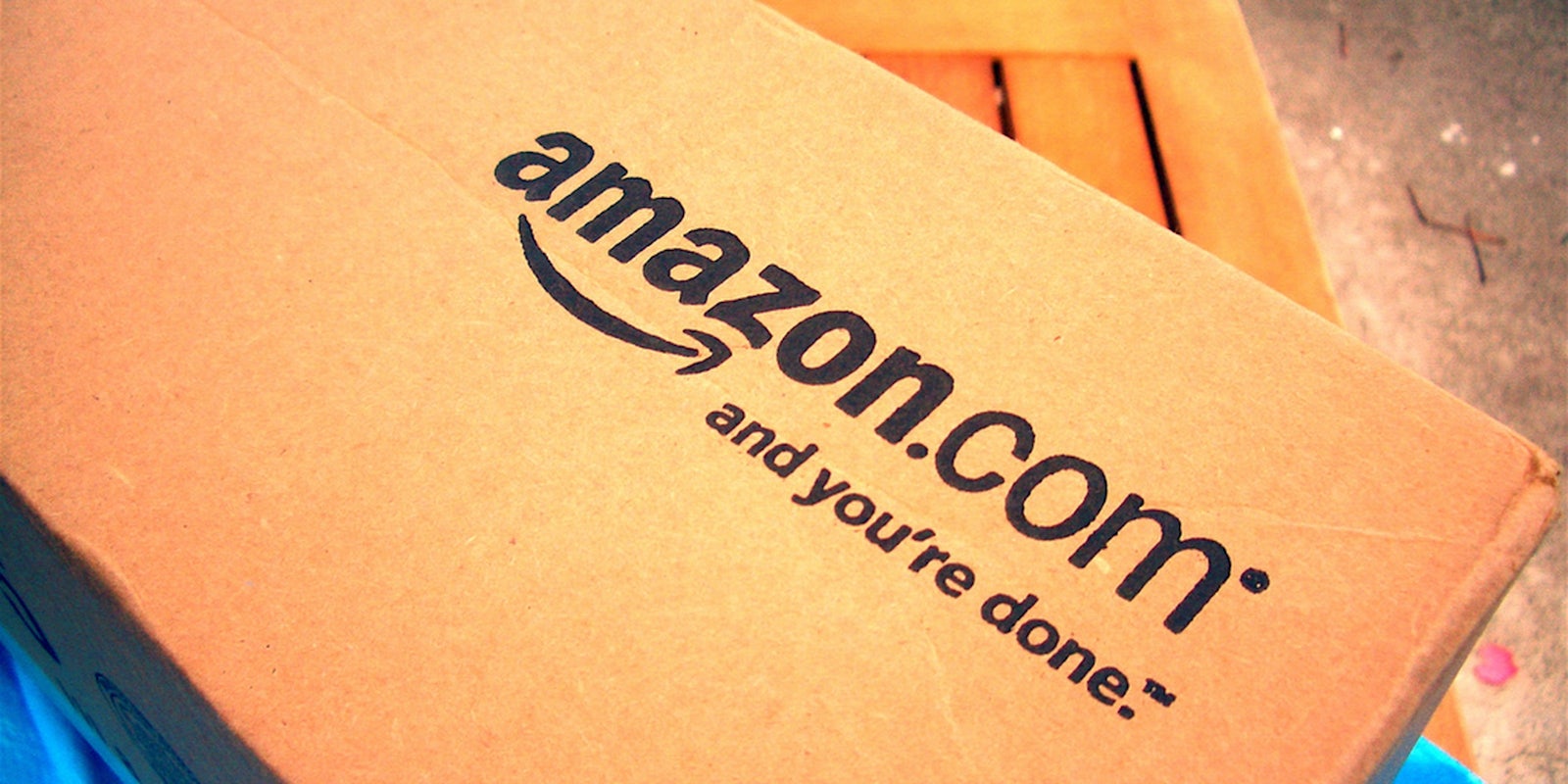Finally, there’s a holiday that officially, overly celebrates the unabashed consumerism that makes America so great.
Online retailer Amazon.com celebrated its 20th birthday with Amazon Prime Day, a blowout sale for Prime members. For one day only, on July 15, the $99 membership—which includes unlimited free two-day shipping and streaming access to movies and original series—would give lucky customers access to steals “better than Black Friday,” according to a press release from Amazon.
The numbers proved Amazon’s promise true, surpassing the unofficial retail holiday in total sales, and nary an overly enthusiastic consumer was trampled. The Verge reports that Amazon sold more than 35,000 Lord of the Ring blu-ray sets, 28,000 rubbermaid dishware sets, and 1,200 TVs.
Numbers aside, you don’t need to look too closely to see that shoppers have to do a lot of digging to find any good sale items on the site. Although the “Deals of the Day” seem relatively enticing, with discounts on Roombas, GoPros, and 50-inch TVs—Amazon’s own products among the group—the “Lightning Deals” are lackluster. In that section, Amazon offers bigger discounts for a shorter period of time, featuring products like beef jerky, Omega Men’s velcro jogger, turmeric curcumin, and a $25 Bucca di Beppo gift card for those nights you want to enjoy a family-style dinner with one friend.
https://twitter.com/dannyodwyer/status/621354810827108352
The more you dig into the so-called deals, the more it looks like Jeff Bezos is cleaning out his closet, selling off the junk he doesn’t need.
There’s method behind Bezos’ madness, however. According to the Harvard Business Review, Amazon Prime relies heavily on what are known as “Whale Buyers,” shoppers who purchase in large quantities, taking advantage of the free shipping. HBR writes:
For Whales, the calculation is straightforward: “Am I going to make enough purchases—and thus save on shipping costs—to justify the cost of Prime?” If the answer is “yes,” this cost savings justification makes Amazon top of mind for all purchases, including small items such as tweezers normally bought at CVS. And if Amazon loses money on shipping (i.e., cumulative shipping costs are greater than the $99 Prime price) for a particular member, the loss can be rationalized as a volume discount to a big-spending customer.
At this point, the “whales” have been covered, so Amazon offers streaming services to “smaller volume” clientele. Membership of smaller-volume customers may not seem so important, but when studies show that Prime members generally spend more than non-members, it becomes clear that joining the club, regardless of intent, encourages easier spending. And when Amazon offers discounted sundries like men’s deodorant without shipping costs to factor in, consumers can forget about getting out of their pajamas and walking to the nearest Target. Amazon is clearly not interested in making profit—in fact, they lose money every year. Instead, they want to change the game.
Amazon wants to render the brick and mortar retailer obsolete.
Not to be outdone by Amazon Prime Day, Walmart shot back with an online sale of its own. “We’ve heard some retailers are charging $100 to get access to a sale,” writes CEO of Walmart.com, Fernando Madeira. “But the idea of asking customers to pay extra in order to save money just doesn’t add up.” The company began offering discounts on similar items across its website, from napkins and diapers, to TVs and tablets. Walmart even rolled back its minimum price for free shipping from $50 to $35. Not taking into account people new to Amazon Prime can opt for a 30-day free trial, Walmart’s deal jabs the exclusivity of Prime Day, while appearing to be of lesser risk to consumers.
Yahoo! Finance found that Walmart “walloped” Amazon during the first Prime Day faceoff. Measuring based on name brands offered, relevance of products, pricing, and shopping experience, Walmart was found to be far superior. While both sites offered similarly excellent discounts, Walmart cut prices on more name brands, products its customer base will actually use (as opposed to the random hodgepodge of multivitamins and superhero costumes Amazon offered), and was a far easier experience since customers didn’t have to deal with ridiculous “Lightning Deals” to have a shot at finding something they needed. All Walmart’s sale items were available all day long. It’s a weekday, after all; people have to work.
If Amazon wants to end the era of leaving your home to buy nail clippers and cat litter, then it is going to have to step up its game and act more like Walmart (a suggestion that makes me cringe to type) and appeal more to everyday shoppers. Its “deals” need to be predictable, accessible, and necessary in order to achieve that apparent goal of retail domination. Otherwise, Prime Day’s just going to amount to nothing more than a flea market in the parking lot of your neighborhood elementary school.
Feliks Garcia is a writer, powerlifter, and foster of homeless cats. He holds an MA in Media Studies from the University of Texas at Austin, is Offsite Editor for the Offing, and previously edited CAP Magazine.
Photo via Mike Seyfang/Flickr (CC BY 2.0)
